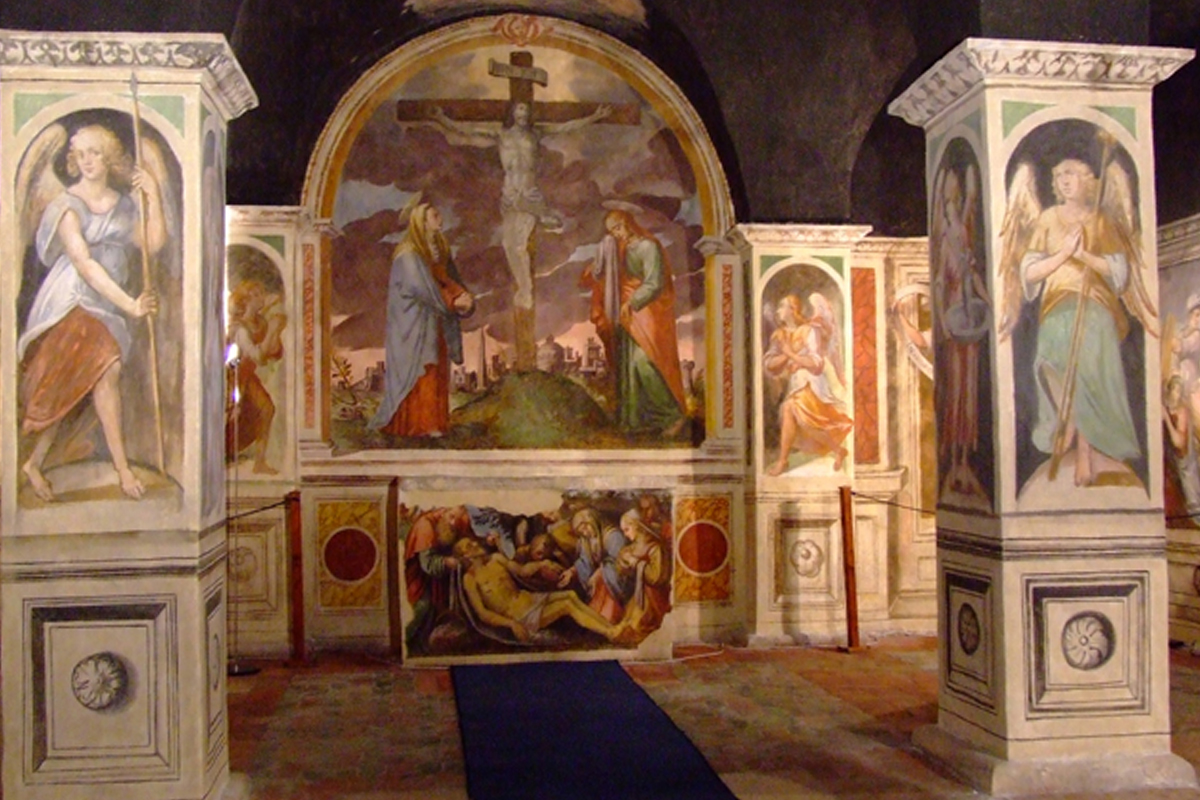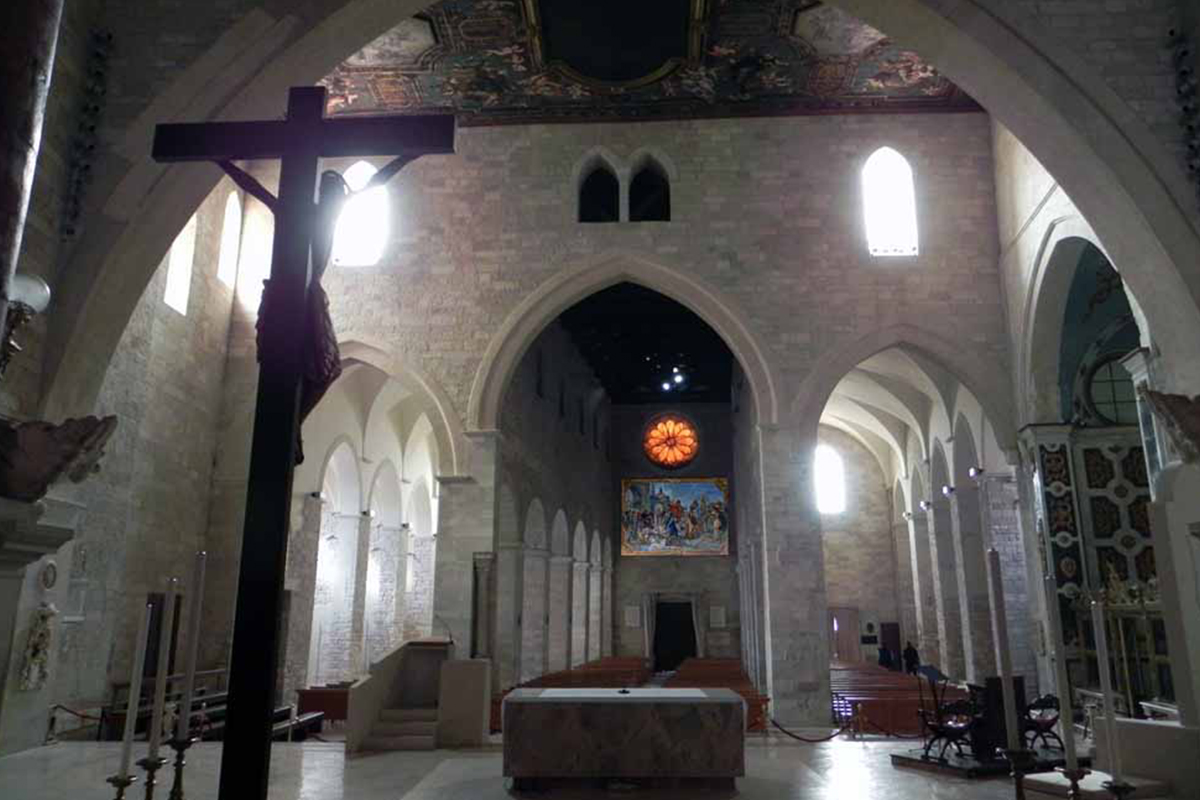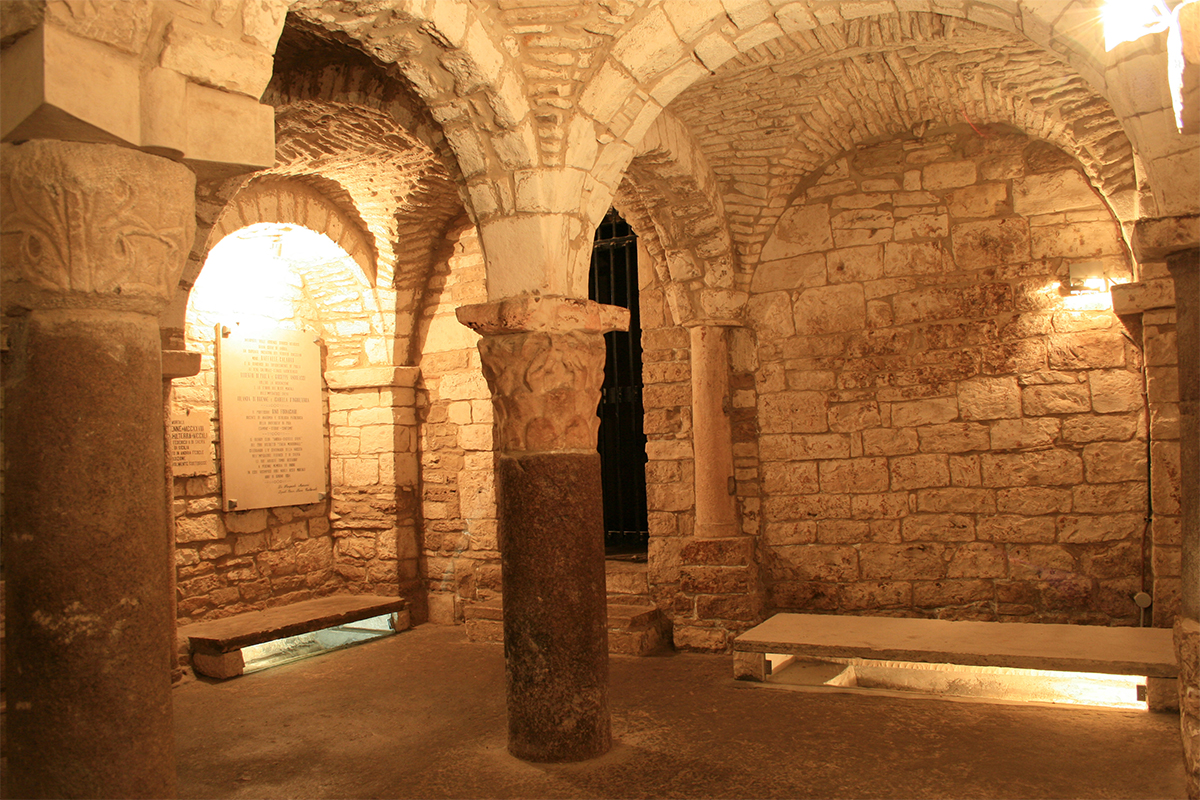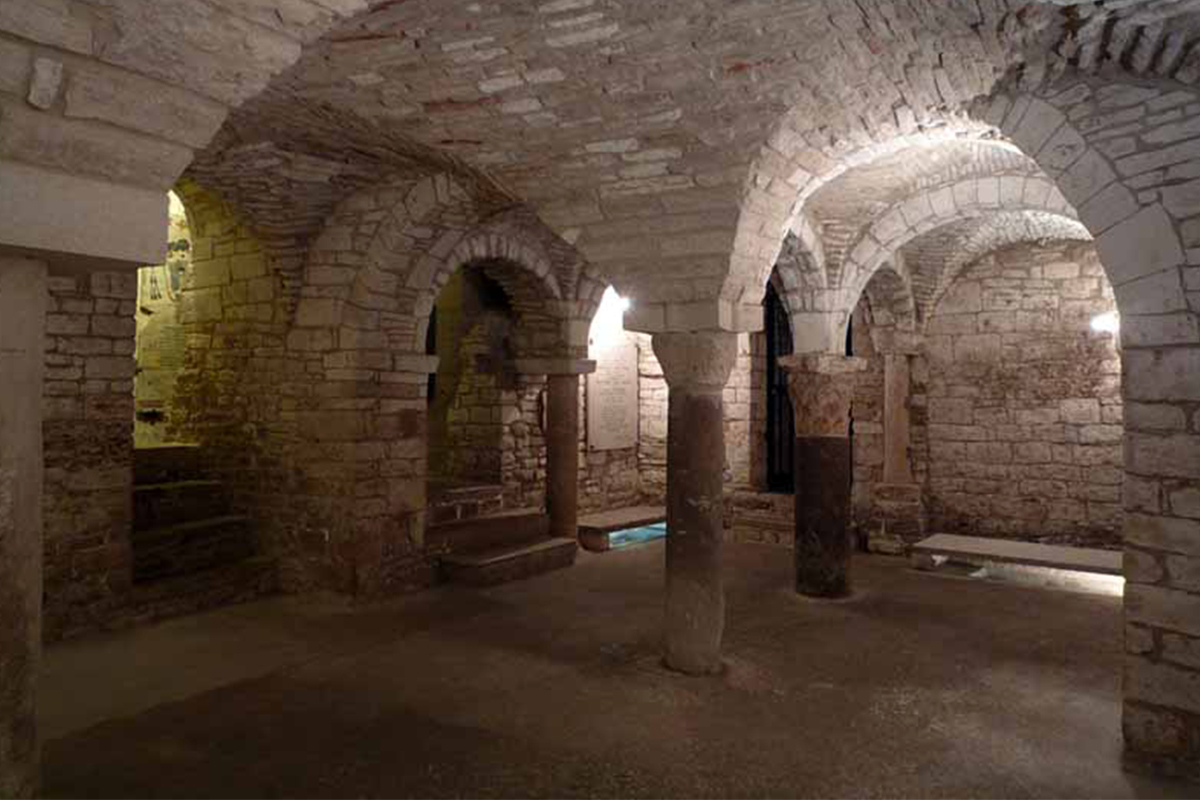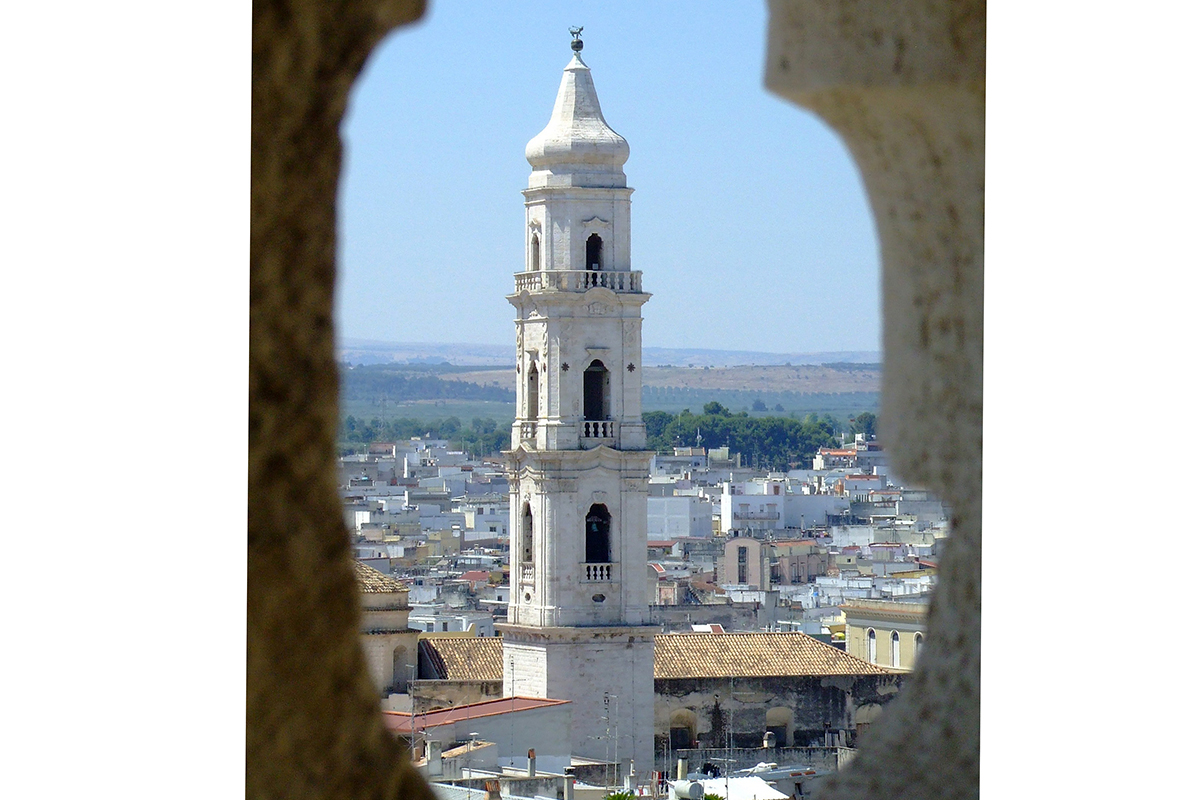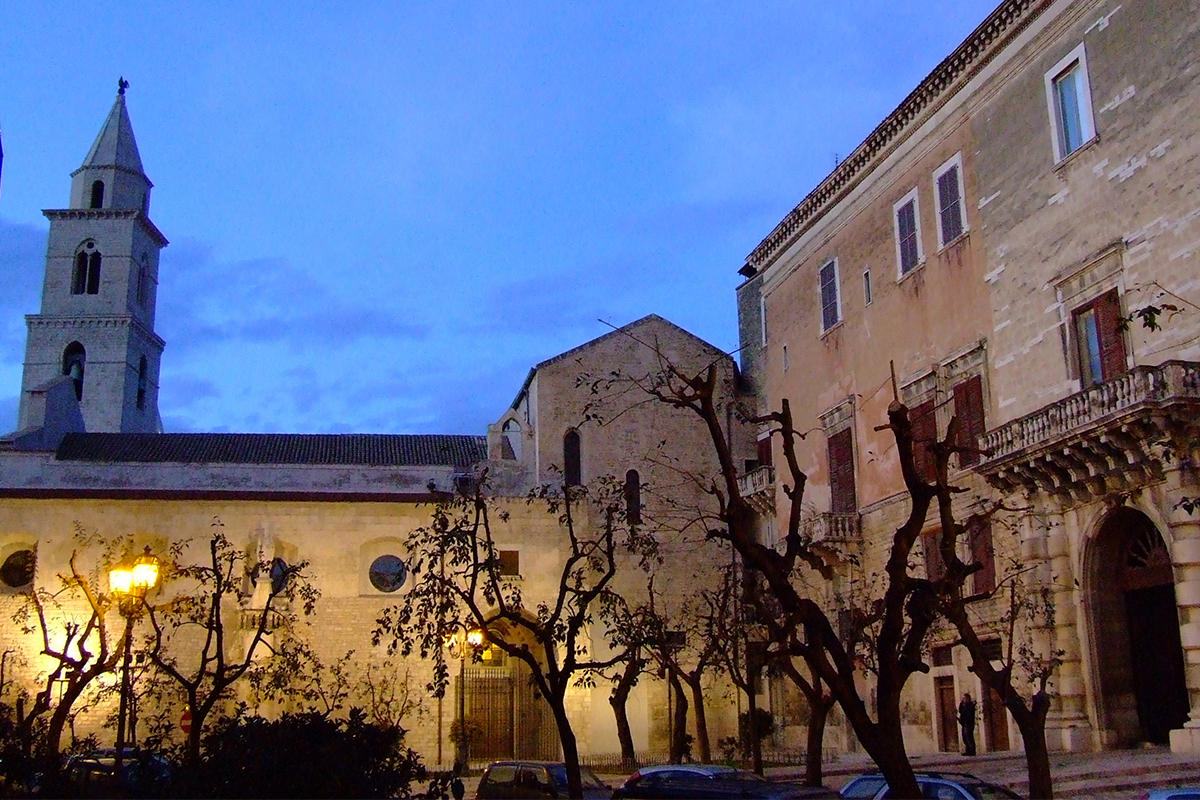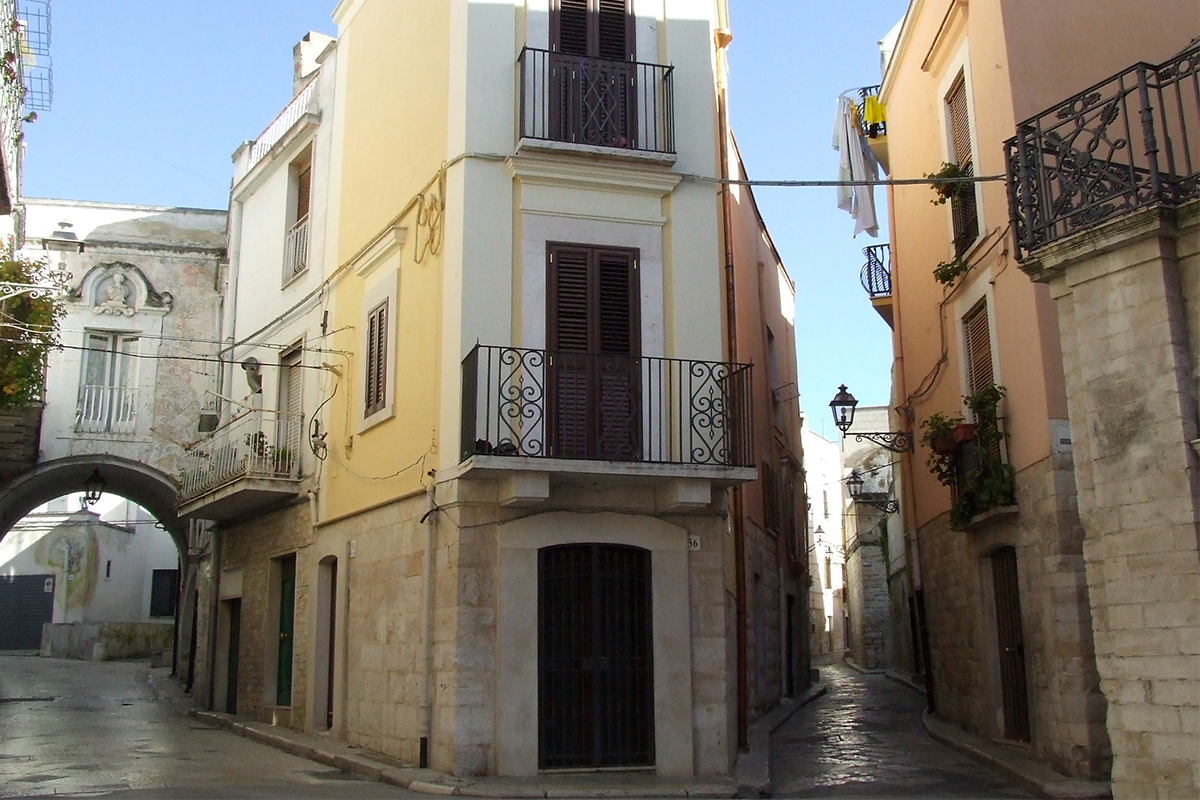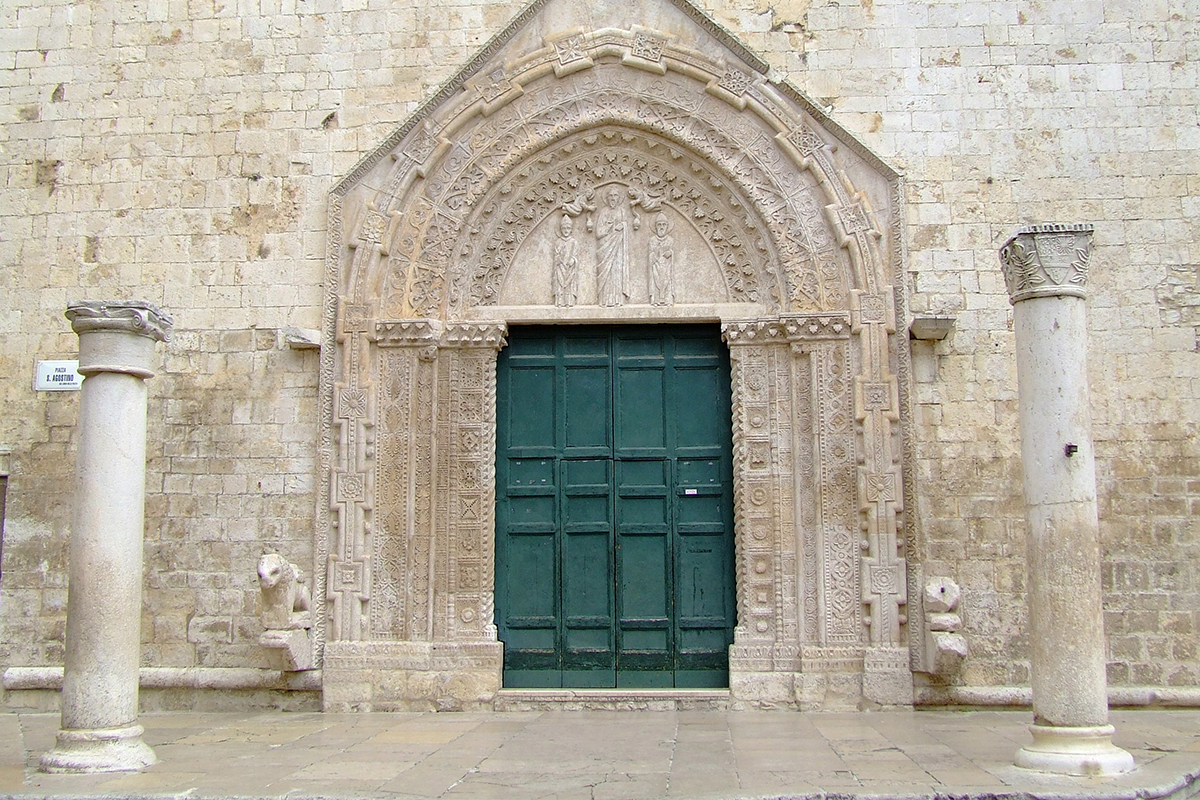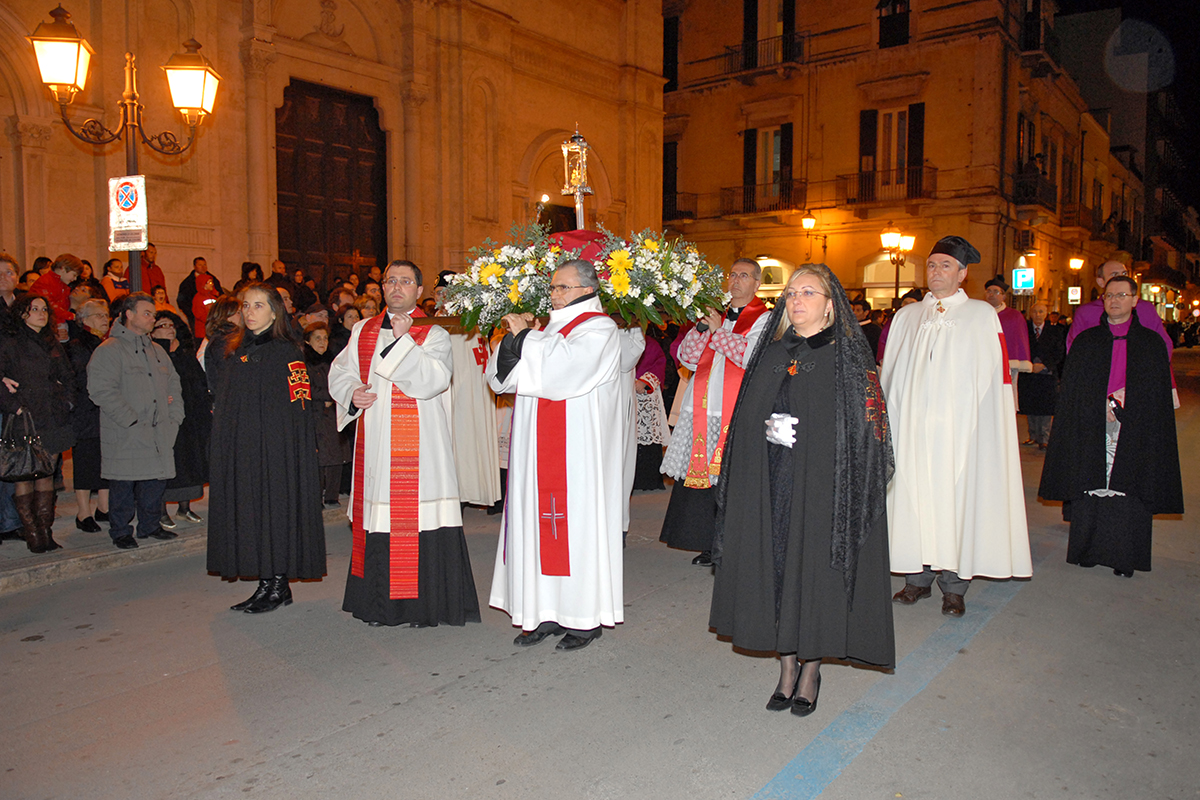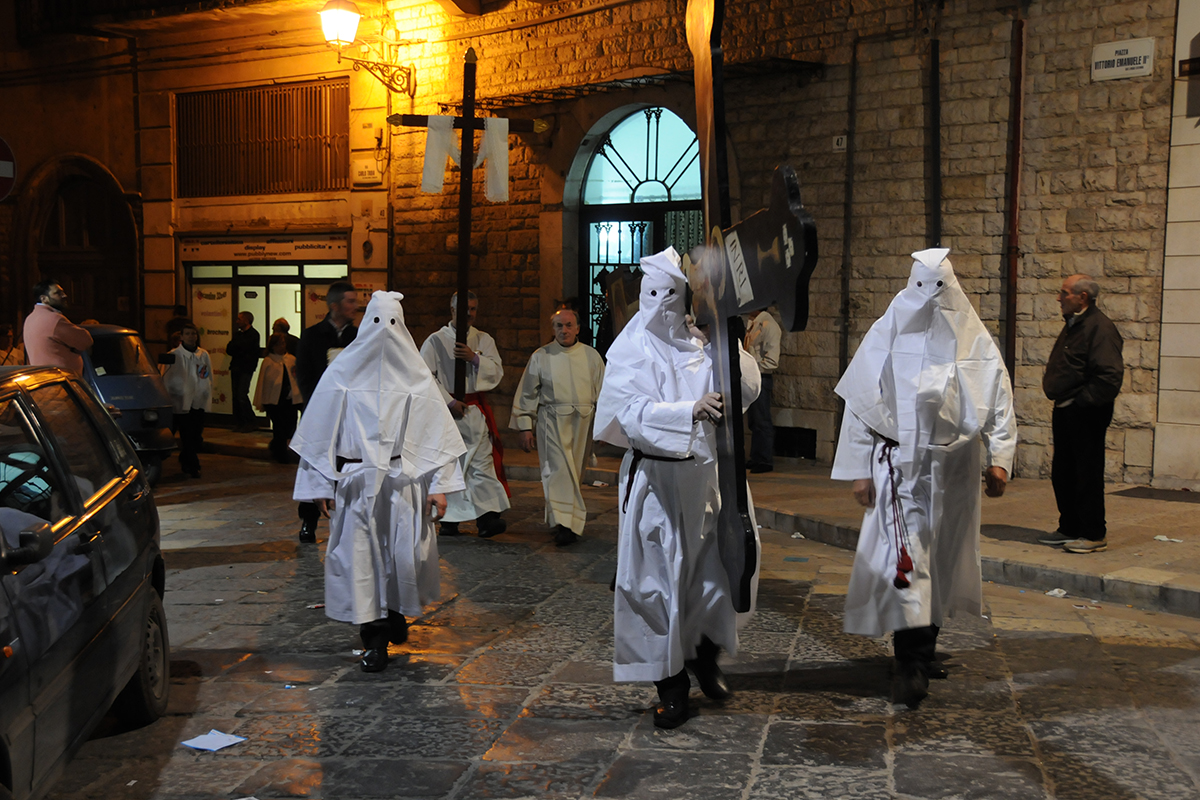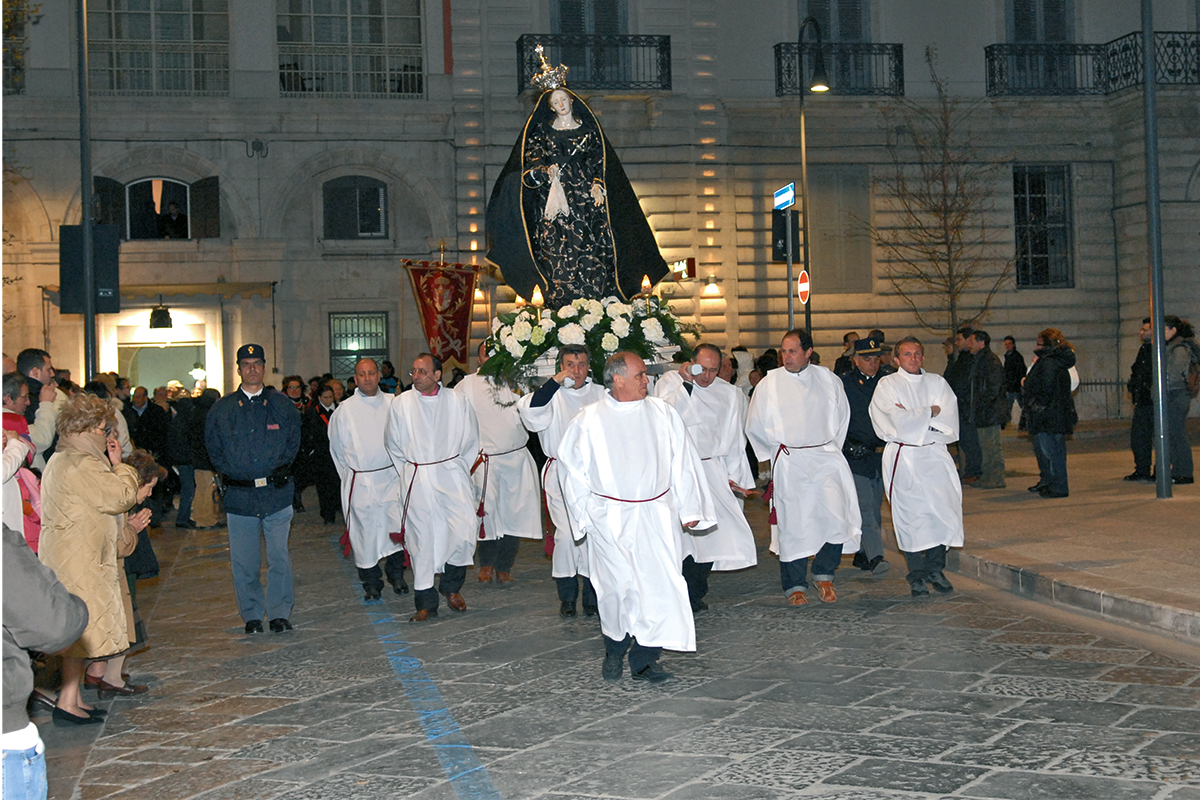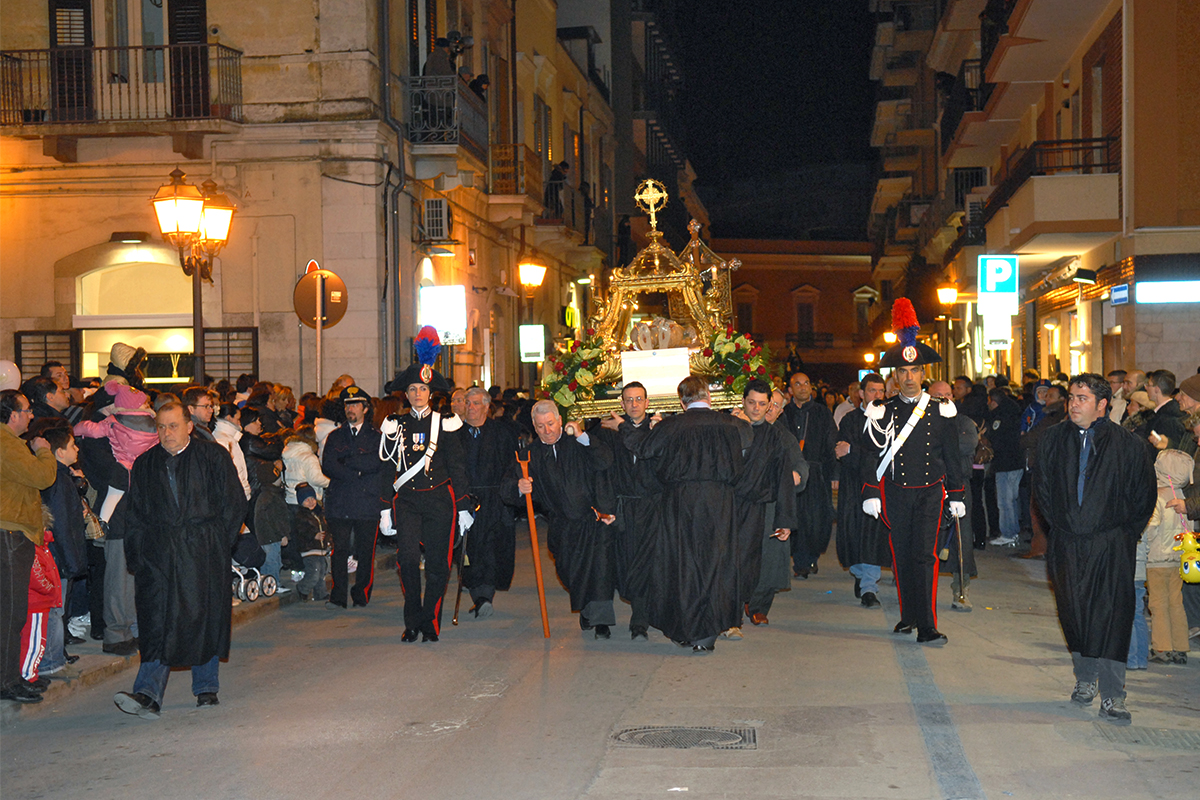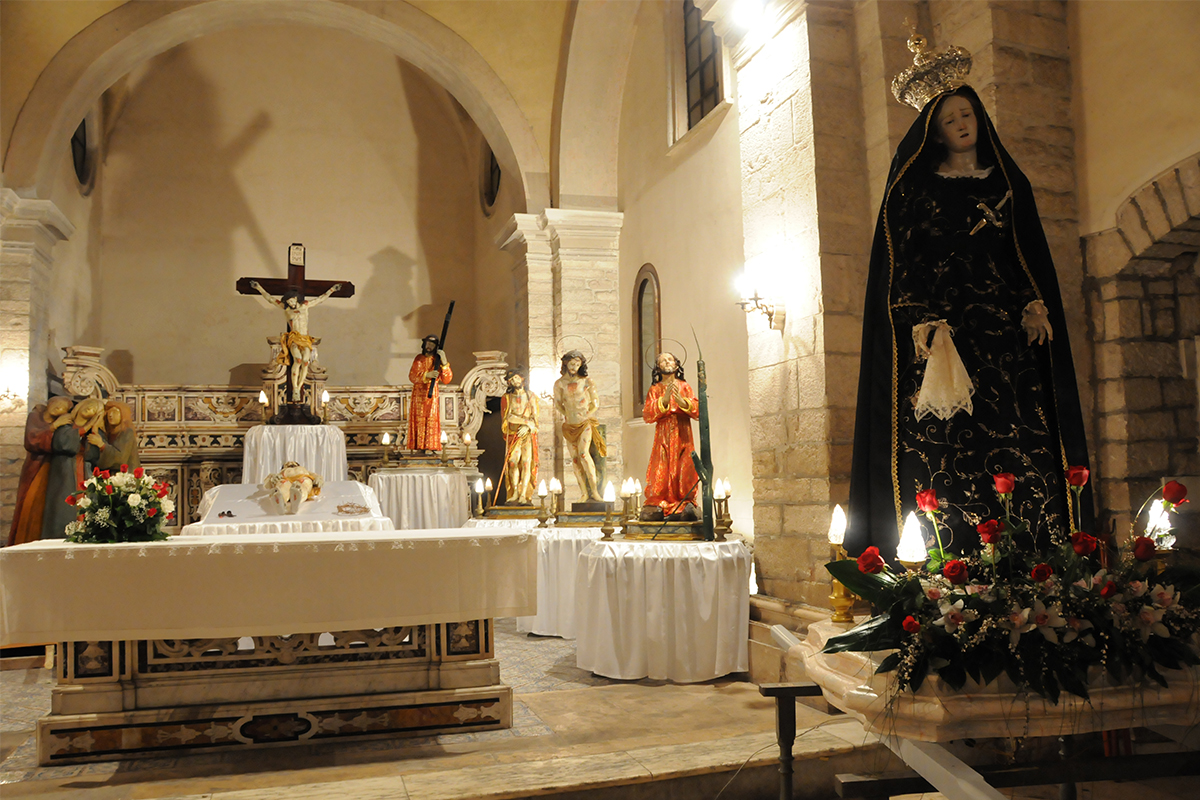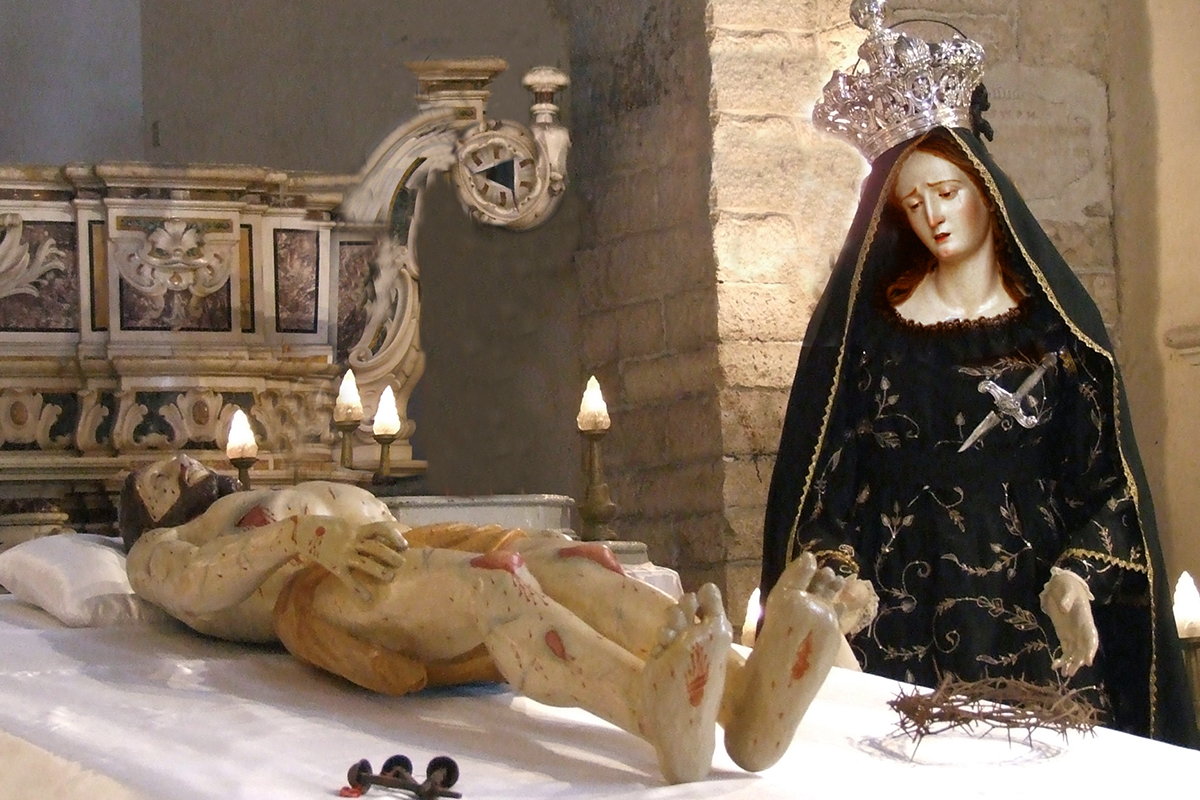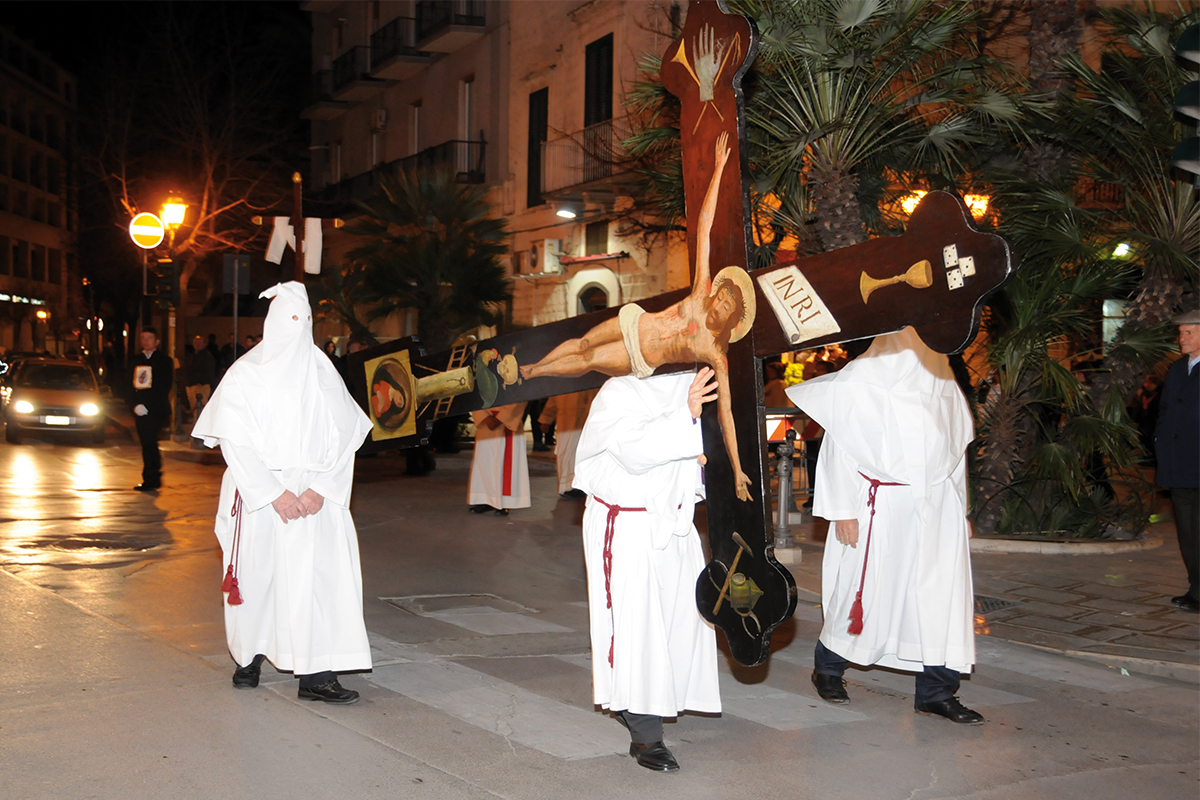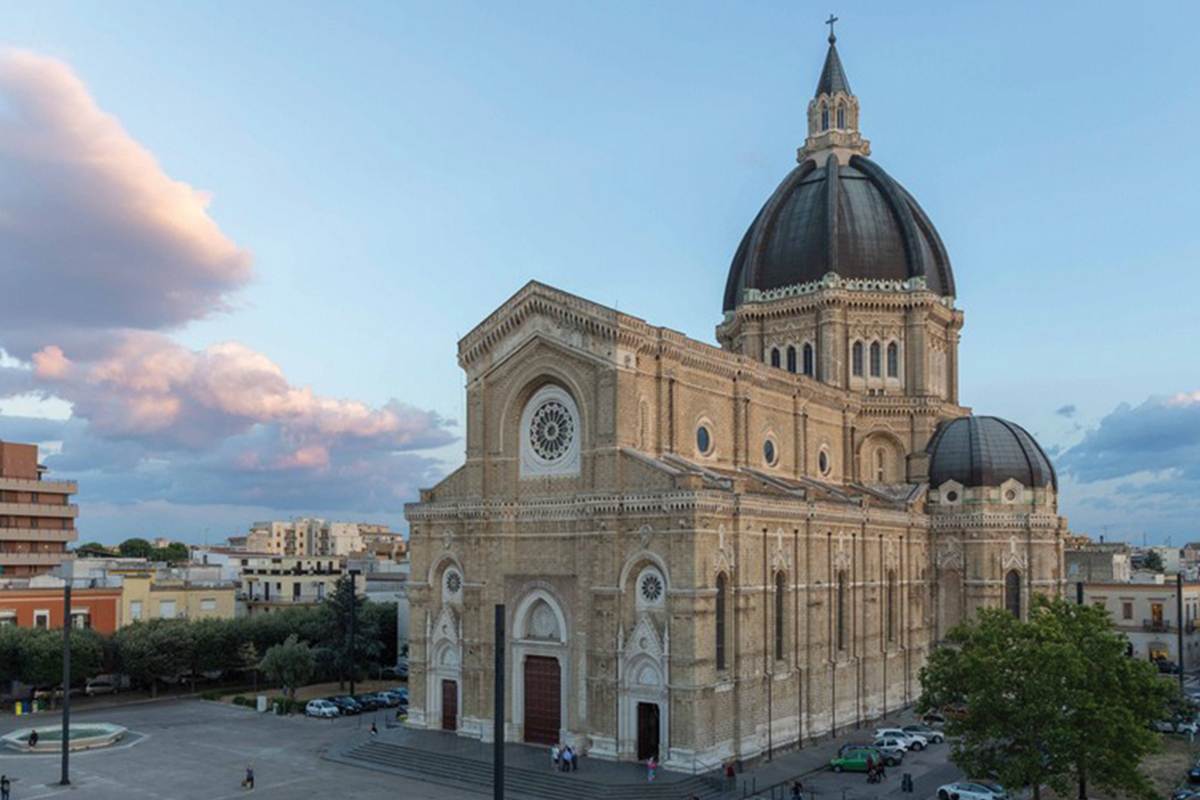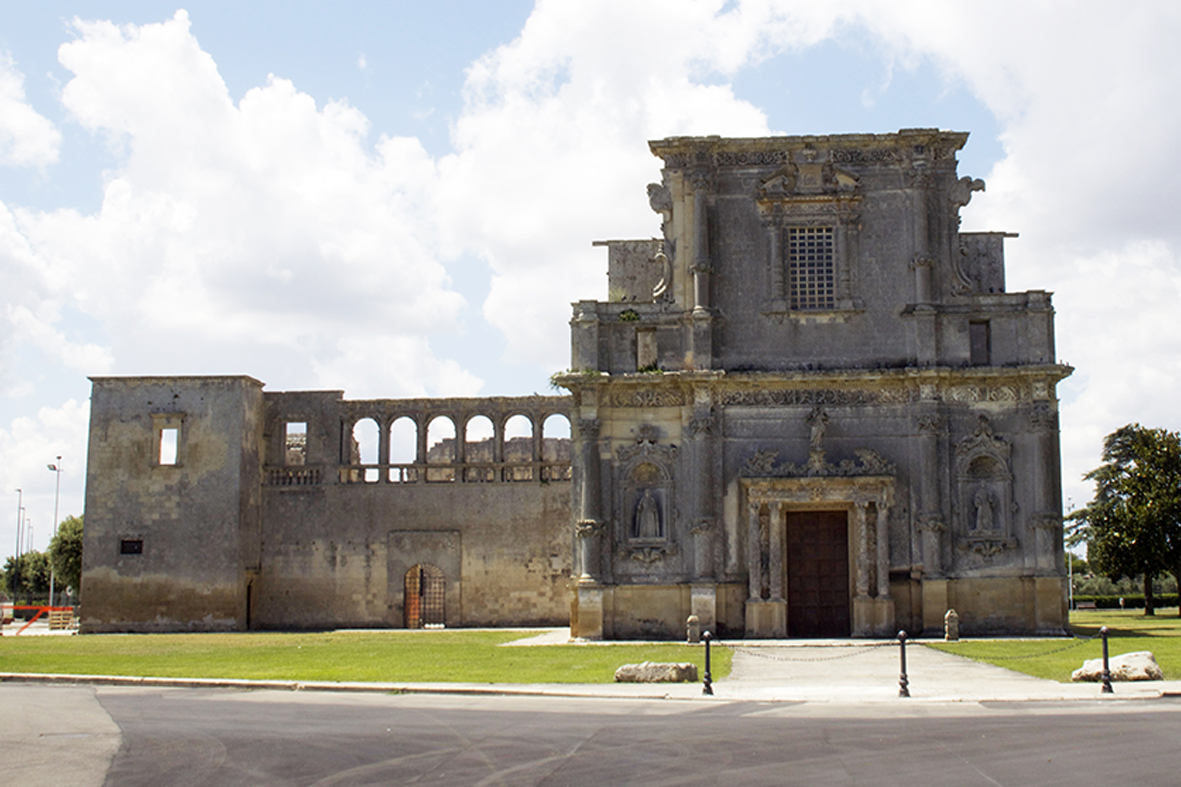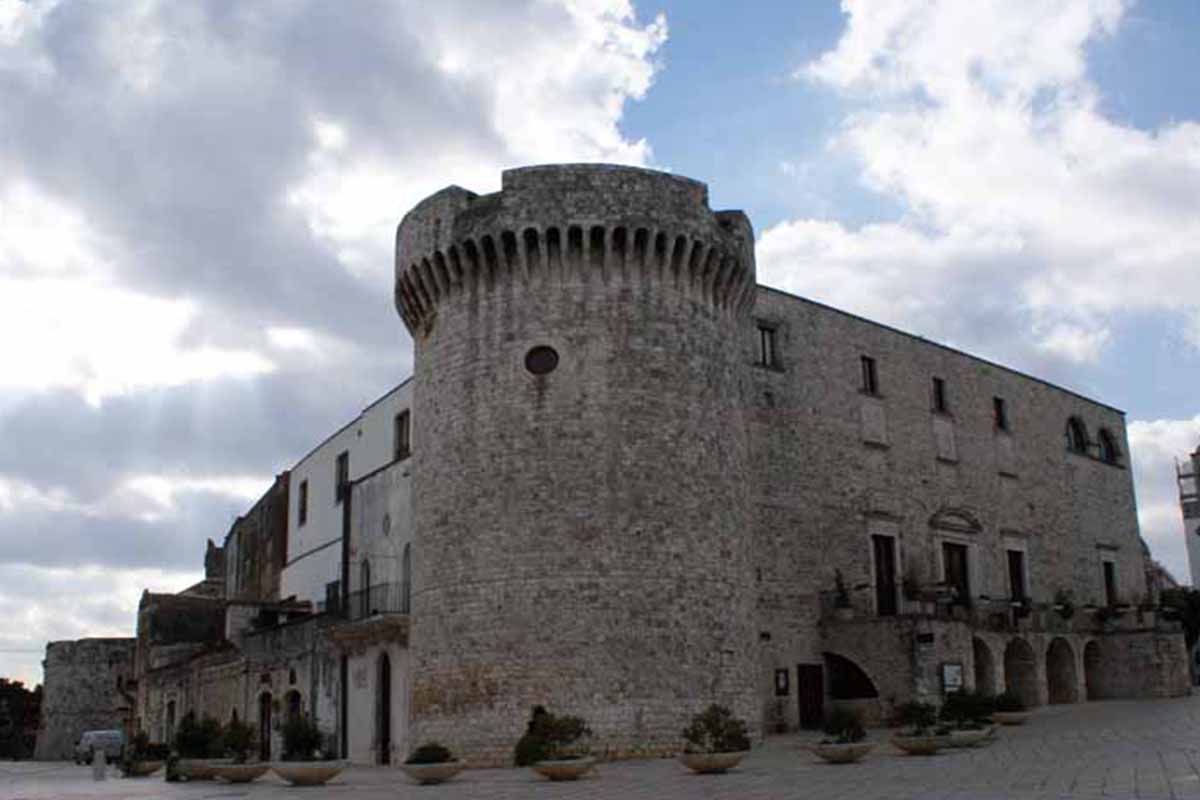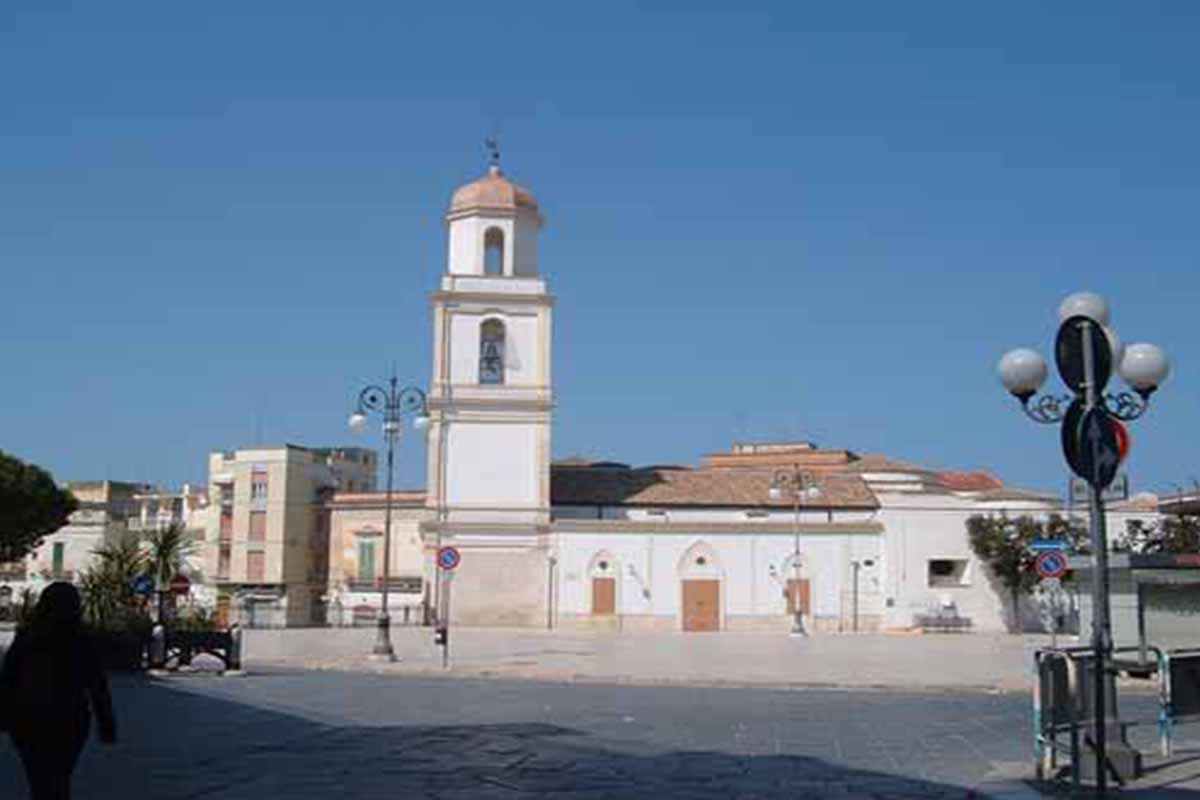Cities
the Holy Thorn
19 Dicembre 2024
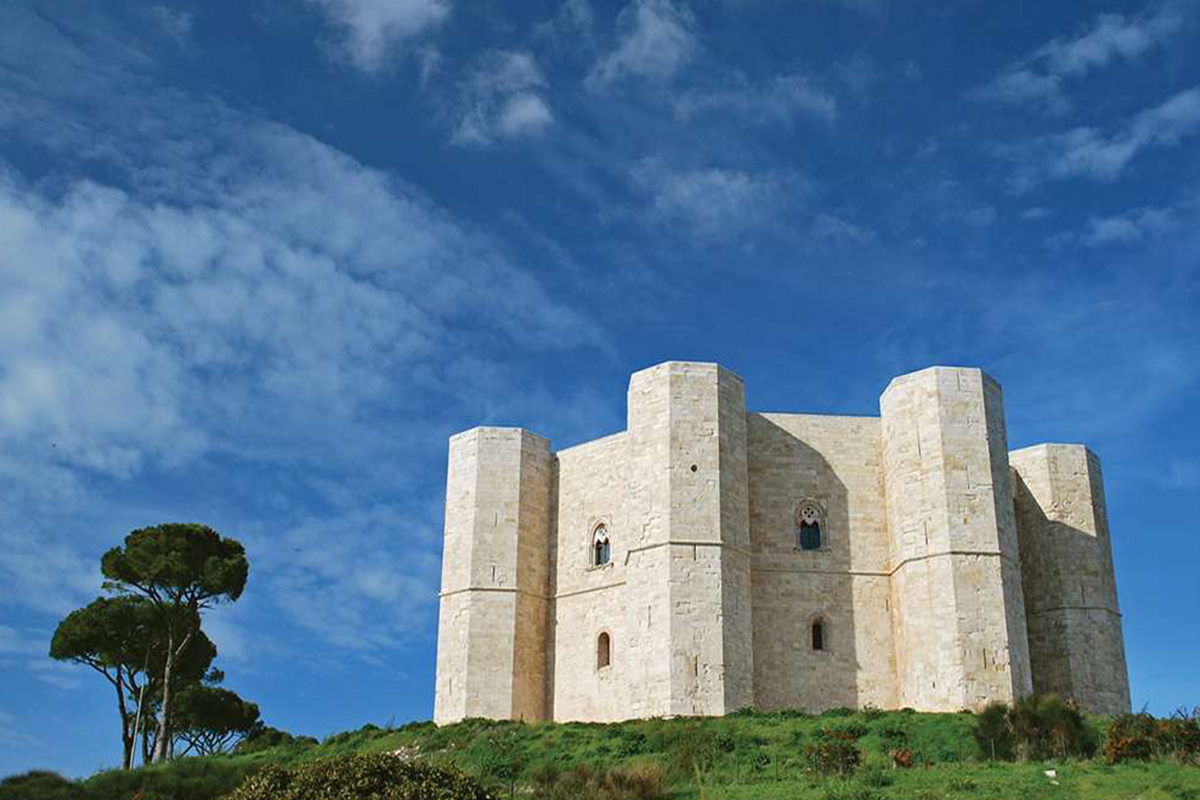
Welcome to Andria, the city of three bell towers, a place rich in history and charm that I invite you to discover. Located in the heart of the Murgia Barese, a few kilometers from the sea, Andria preserves in its historic center the traces of distant eras, shaped by kingdoms and dominations: Norman, Swabian, Angevin, and Aragonese. Every step here takes you back in time, through medieval alleys and ancient churches that tell stories of faith and power.
Andria is renowned for its three bell towers, which rise above the city like silent guardians. The first is the bell tower of the Church of San Francesco (13th–14th centuries), a splendid example of late Baroque with Gothic elements, where, in the Chapel of Maria SS. Addolorata, you can find a precious wooden statue of the Virgin. We continue to the bell tower of San Domenico (14th–16th centuries) and finally to the Cathedral of Andria (12th–16th centuries), dedicated to the Assumption. This cathedral is a masterpiece of contrasts, with a neoclassical portal, a Romanesque rose window, and a Gothic interior.
Follow me inside the Cathedral, where you will find one of its most revered treasures: the Holy Thorn of Christ’s Crown, donated in 1308 by Beatrice of Anjou. Every time Good Friday coincides with March 25, the day of the Annunciation, the Holy Thorn reveals tiny stains of color, an extraordinary phenomenon that leaves the faithful in awe.
We descend into the paleochristian crypt, where tradition holds that the remains of two of Emperor Frederick II’s wives are buried. And it is to him that another symbol of Andria is linked: the magnificent Castel del Monte, with its perfect octagonal structure. A unique fortress, combining Gothic, Romanesque, Arab, and Norman styles, it has been a UNESCO World Heritage Site since 1996. Frederick II built it as a symbol of Swabian power, and to this day, the castle fascinates and dominates the surrounding landscape, leaving visitors breathless.
Must-see attractions: Cathedral of Andria, Church of San Francesco, Church of San Domenico, Historic Center, Castel del Monte (UNESCO World Heritage Site), Paleochristian Crypt, Porta S. Andrea (Federico’s Arch), Basilica of Santa Maria dei Miracoli.
These events represent a heritage of faith, tradition, and sacred art, making Holy Week in Puglia a unique and authentic experience. Don’t miss the opportunity to live these moments of intense spirituality.
First Friday of Lent
Processione della Sacra Spina
The Roman Rite Lent begins with the liturgy of the Ashes, marking the start of a spiritual journey toward Christ, strengthened by moments of deep devotion and Memoria Christi. One of the most significant events is the Processione della Sacra Spina, which takes place on the first Friday of Lent in the city of Andria.
The Sacra Spina, a remarkable relic kept in the Cattedrale di Andria, is a precious royal gift from Beatrice of Anjou (1309) to the city. This extraordinary object of worship is distinguished by a miraculous phenomenon: when Good Friday coincides with March 25, the Solemnity of the Annunciation of the Lord, the bloodstains on the relic, usually pale, become vivid red. This event, documented since 1633, continues to draw the faithful from all over.
During the procession, the Sacra Spina is carried by the Bishop in a precious silver reliquary, accompanied by the deep devotion of the faithful. This moment represents a unique call to God’s mercy and an invitation to spiritual reflection.
-Date: March 5, 2025
-Time: 6:00 PM
-Location: Cattedrale di Andria
Friday of Passion
Processione Confraternale della Desolata
On the Friday of Passion, which precedes Palm Sunday, the city of Andria experiences another moment of great spiritual impact with the Processione Confraternale della Desolata. The event starts from the artistic Chiesa di San Francesco d’Assisi, home to the Arciconfraternita di Maria SS.ma Addolorata, and proceeds towards Chiesa di San Sebastiano, known as Chiesa del Purgatorio.
The wooden statues of the Mysteries, dating back to the first half of the 18th century, are displayed in an atmosphere of deep meditation and devotion. This evocative procession expresses the sorrow of the Virgin Mary, inviting the faithful to reflect on the Mysteries of Christ’s Passion
-Date: April 11, 2025
-Time: 7:00 PM
-Location: Chiesa di San Francesco d’Assisi
Good Friday
Processione dei Misteri Dolorosi
On Good Friday, Andria renews its tradition with the Processione dei Misteri Dolorosi, a moving Via Crucis that winds through the streets of the historic center. Presided over by the Bishop, the procession features the presence of the Sacra Spina, escorted by knights and dames of the Ordine Equestre del Santo Sepolcro, adding solemnity to the event.
The 18th-century wooden statues represent the Memoria Passionis, depicting the most touching moments of Christ’s Passion. Particularly moving are the wooden crosses carried on the shoulders by the crociferi and the statue of the Sorrowful Virgin, which concludes the procession, inviting the faithful to a final moment of prayer and reflection.
-Date: April 18, 2025
-Time: 7:00 PM
-Location: Chiesa del Purgatorio
These events represent a heritage of faith, tradition, and sacred art, making Holy Week in Puglia a unique and authentic experience. Don’t miss the opportunity to live these moments of intense spirituality.
Ash Wednesday / March 5, 2025
• ANDRIA / Processione della Sacra Spina / Cathedral / 6:00 PM
Friday of Passion / April 11, 2025
• ANDRIA / Processione Confraternale dell’Addolorata / Church of St. Francis of Assisi / 7:00 PM
Good Friday / April 18, 2025
• ANDRIA / Processione dei Misteri Dolorosi / Church of Purgatory / 7:00 PM
ARCICONFRATERNITA SERVI DI MARIA SANTISSIMA ADDOLORATA
The Arciconfraternita di Maria SS.ma Addolorata, founded by Royal Decree on May 15, 1832, and elevated to the rank of Archconfraternity on May 14, 1855, houses in its sumptuous Cappellone, specially built in 1887 by confraternity member Count Onofrio Spagnoletti-Zeuli and dedicated to its august patron, the statue of the Virgin of Sorrows. This image, a gift from the noble Jannuzzi family, was crafted in 1840 from polychrome carved wood by skilled Neapolitan sculptors and placed in the niche above the altar, which belongs to the Archconfraternity.
The Virgin is depicted in her composed sorrow, emphasized by the tears on her face, the handkerchief in her right hand, and the sword piercing her heart. On Holy Thursday, the Cappellone is further enriched by the presence of the Eucharistic Repository.
ARCICONFRATERNITA SS. SACRAMENTO IN CATTEDRALE
The Arciconfraternita SS. Sacramento in Cattedrale, established on January 22, 1557, was officially recognized as a moral entity on May 5, 1613. Diocesan archival sources preserve ancient rules of the Venerabile Confraternita, dating back to 1823.
Artistically imposing, its seat is a valuable side chapel within the Cathedral, enhancing the presbytery with two sacred painted scenes that frame a majestic wooden crucifix. Beneath it stands a precious block of polychrome marble housing the tabernacle.
With deep spirituality, the archconfraternity promotes Eucharistic devotion, an expression of the Church’s faith that prays for the salvation of all humanity, never detached from exemplary works of charity. As part of its mission, it participates in the solemnity of Corpus Christi (an ancient tradition is the investiture of new members on the preceding Thursday), coinciding with the liturgical ceremony held in the Vatican.
Fully adhering to the initiatives scheduled for the Lenten liturgical period by the Ecclesiastical Assistant, the Arciconfraternita del SS. Sacramento in Cattedrale solemnly takes part in:
-The Forty Hours Devotion -The Easter Triduum (on Holy Thursday, 12 newly admitted confraternity members participate in the sacred rite of the washing of the feet, performed by the Bishop during the Missa in Coena Domini).
-The Good Friday Procession, following the Relic of the Sacra Spina.
ARCICONFRATERNITA SS. IMMACOLATA CONCEZIONE
The Confraternita dell’Immacolata Concezione has been recorded since November 10, 1599, as stated in an inscription located in the ancient convent of Santa Maria Vetere, its first seat, later transferred to the Collegiate Church of SS. Annunziata.
In 1659, during his pastoral visit, Mons. Alessandro Egizio declared: "In the chapel, there is a lay congregation under the invocation of the Conception of the Blessed Virgin Mary…".
Inside the splendid side chapel of the Chiesa SS. Annunziata, richly adorned with works of art, an inscription dated 1737 marks the burial site of the members of the Pious Sodality, which included individuals from various social classes, as stated in the ancient statutes.
With Regio Assenso in 1776, the confraternity was incorporated into the legislative provisions of the 18th century. Particularly devoted to works of charity, it contributed 30 ducats to the dowry of an orphaned girl, chosen by lottery (bussolata).
Throughout the 19th century, the Arciconfraternita continued its work, as documented by numerous records (pastoral visit of Mons. Bolognese on March 7, 1823 – appointment of administrators in 1865), financing itself through the revenues of confraternity-owned properties, which were later absorbed by the Congregazione di Carità, founded in 1873 to support public welfare.
Even today, after a 410-year historical journey, the Arciconfraternita continues its mission of worship, charity, and faith expression. In collaboration with other confraternities of the Diocese, it actively participates in the Holy Week Liturgical Rites, in full harmony with the Ecclesiastical Assistant.
THE "PIA ASSOCIAZIONE CROCIFERI"
An enriching presence within the illustrious diocese, spiritually guided by Deacon M. Melillo, promotes devotion to Jesus Crucified, embodying a commitment to faith and a concrete witness to Christianity.
It possesses twenty-six wooden crosses and participates in the Lenten Procession on Good Friday. The collection of antique crosses, crafted by local artisans from oak or chestnut wood and exquisitely painted by skilled sacred artists, consists of various pieces, carried in procession on the shoulders of crociferi, who take turns bearing the heavy burden.
Historically, the Pia Associazione Crociferi belongs to the popular piety of the 19th century.
The Crocifero, silent guardian of the imposing banner, advances with slow steps and solemn reverence, immersing himself in the sorrowful Passion of Jesus Christ.
The texts have been approved by the Priors of the Arciconfraternite, with the consent of the Spiritual Assistants.
The gastronomic tradition of Andria encompasses authentic flavors and recipes passed down through generations. The emblematic dish is the confetto riccio di Andria, a unique delicacy recognized as a Traditional Agri-Food Product (PAT), distinguished by its characteristic rough surface and unmistakable taste.
The region is also renowned for the production of Burrata IGP, a fresh stretched-curd cheese with a soft and creamy center, as well as for its excellent extra virgin olive oil from the Coratina variety.
Cities Info
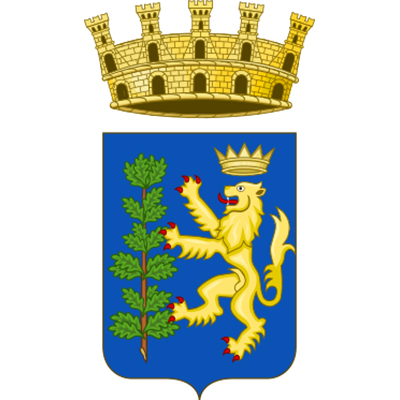
Municipality of Andria
T +39 0883 290111
Municipal Police
T +39 0883 290516
Tourist Information Point
Piazza Vittorio Emanuele II, 16
T +39 0883 290229
infopointandria@gmail.com
Highlighted Municipalities


 it
it en
en fr
fr es
es de
de pt
pt